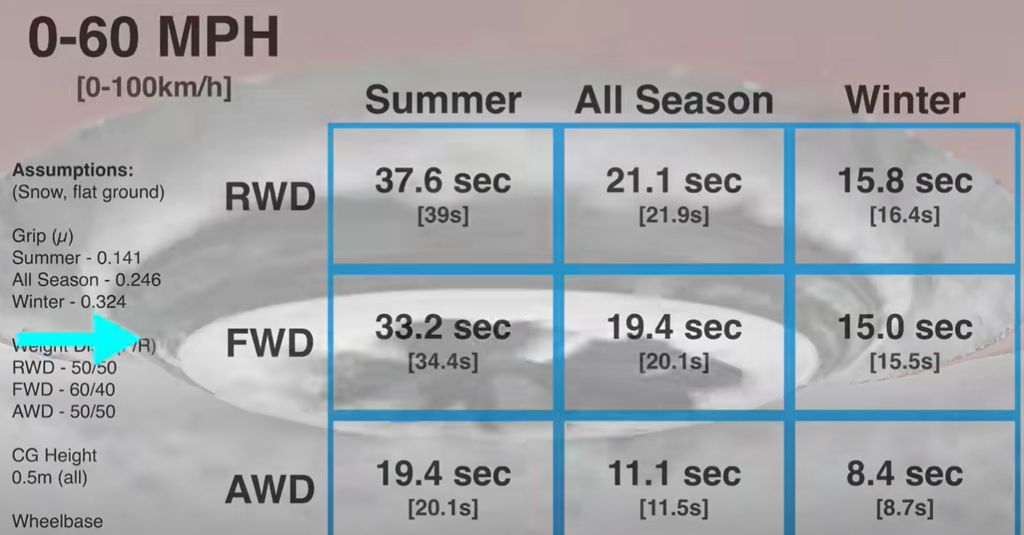Finally, we can put an end to the great debate over whether you absolutely need all-wheel drive (AWD) for winter driving or if front-wheel drive (FWD) or rear-wheel drive RWD) with winter tires will be adequate for your winter driving needs.
Leave it to the folks at Engineering Explained to put an end to this debate with information backed by science, mathematics, and more. But before we get into explaining which setup is required for your driving needs, let us first take a look at the visual differences between summer and winter tires.
Aside from both being a car tire, there’s little resemblance between the two. The winter tires have all sorts of tread blocks of differing sizes and shapes, as well as zig-zag cuts on those blocks to help with traction in the snow. Additionally, whereas the summer tire has long continuous grooves to help protect against hydroplaning, the winter tire forgoes most of the grooves and long tread blocks in favor of more individual blocks with additional in-between spacing. There are more differences, including the stiffness of the tread blocks and the hardness of the rubber, which are explained in detail in the video.
Moving on to some of the actual test results. Below are the results for summer, all-season, and winter tires in terms of acceleration from 0 to 60 miles per hour on snow-covered flat ground for RWD, FWD, and AWD vehicles equipped with each of the three different types of tested tires.

The big takeaway here is that an AWD car with summer tires is much slower than a RWD with winter tires, so AWD alone is not adequate in the snow. You’d need to at least fit it with all-season tires. All of the vehicles fitted with summer tires performed very poorly in this test, which should tell you that summer tires and snow don’t mix.
The winner in the 0 to 60 MPH test on flat, snowy roads is AWD with winter tires, as you’d probably expect, but both FWD and RWD with winter tires performed acceptably. With all-season tires, AWD performed well, but both FWD and RWD were subpar.
Additional parameters are explained in the video, which you should watch in its entirety. However, the conclusion is as follows:

So, if your neck of the woods sees snow, but isn’t hilly, then AWD, FWD, or even RWD with winter tires should suffice. If it’s snowy and hilly where you live, then AWD with winter tires is your only choice. If there’s no snow by you, then all options are open.
That’s the grand conclusion presented in the video, but there are numerous smaller details explained, so we strongly urge you to watch it all. Additionally, Engineering Explained touches on the unique challenges that tires and electric cars face, stating:
“But what about electric cars? Winter tires pose a unique challenge to electric cars, as they are generally louder, which is more noticeable in EVs. Winter tires also tend to have higher rolling resistance, which reduces your range in an EV. Finally, winter tires use softer compounds, meaning more wear when used by a heavy EV.”
At a later point in the video, the discussion focuses on a Hankook winter tire called iON i*cept that’s designed specifically for EVs. It’s worth a watch if you are looking for an EV-specific winter tire.
Read the full article here


